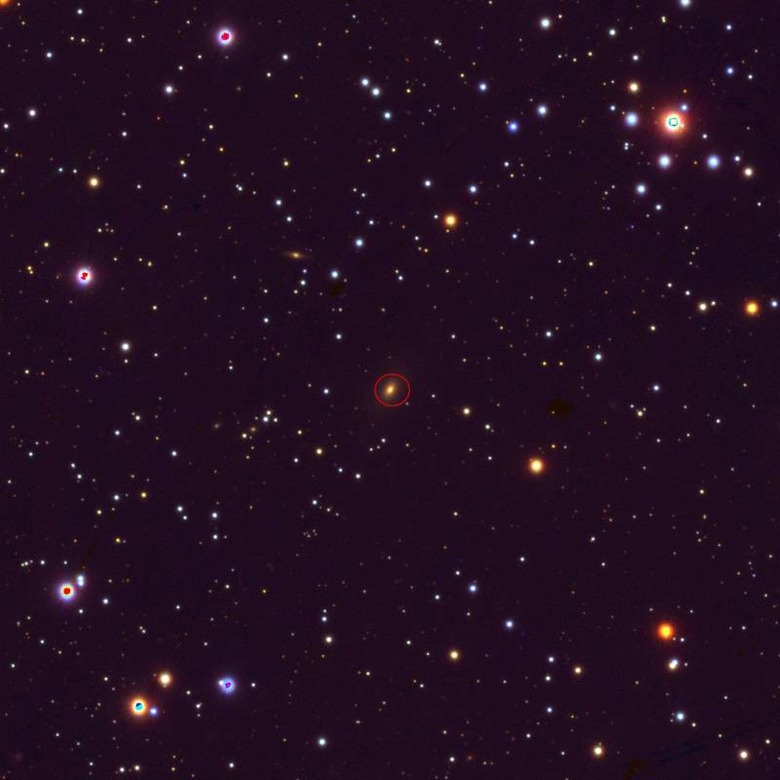Scientists Take A Closer Look At The "TIE Fighter" Active Galaxy
One glance the image below and Star Wars fans can see where an object called TSX 0128+554 got its name. The object looks very similar to Darth Vader's TIE fighter in the iconic science-fiction films. TSX 0128+554, known as TSX 0128 for short, has had a pair of powerful activity sessions in the last century. Five years ago, NASA's Fermi Gamma-ray Space Telescope discovered that TSX 0128 is a faint source of gamma rays, the highest-energy form of light.Researchers have taken a closer look at TSX 0128 using both the Very Long Baseline Array (VLBA) and the NASA Chandra X-Ray Observatory. After Fermi discovered the object was emitting gamma rays, scientists "zoomed-in a million times closer," according to researcher Matthew Lister, using the VLBA's radio antennas and charted the shape of the object over time. Lister says that the first time he saw the results, he immediately thought it looked like Vader's TIE Fighter.
Despite the looks of the galaxy, its appearance at different radio frequencies help the team learn more about how active galaxies can change dramatically on a decade timescale. TSX 0128 is 500 million light-years away from Earth in the constellation Cassiopeia. It has a supermassive black hole around 1 billion times the Sun's mass at its center and is classified as an active galaxy.

Interestingly, all the stars together can't account for the amount of light it emits. It's extra energy includes excess radio, x-ray, and Gamma-ray light. Scientists believe the emissions arise from regions near the central black hole where a disk of gas and dust accumulates in heats up because of gravitational and frictional forces.
Scientists say that about one-tenth of active galaxies produce a pair of jets, which are beams of high-energy particles traveling near the speed of light in opposite directions. It's believed that those jets produce gamma rays. In some cases, those jets collide with intergalactic gas to eventually slow and halt the outward motion of the particles. The material starts to flow back towards the galaxy center, which created the interesting shape of TSX 0128. The object spans 35 light-years across and tilts about 50 degrees out of our line of sight. Scientists believe that tilt is why we don't see all the gamma-rays.
